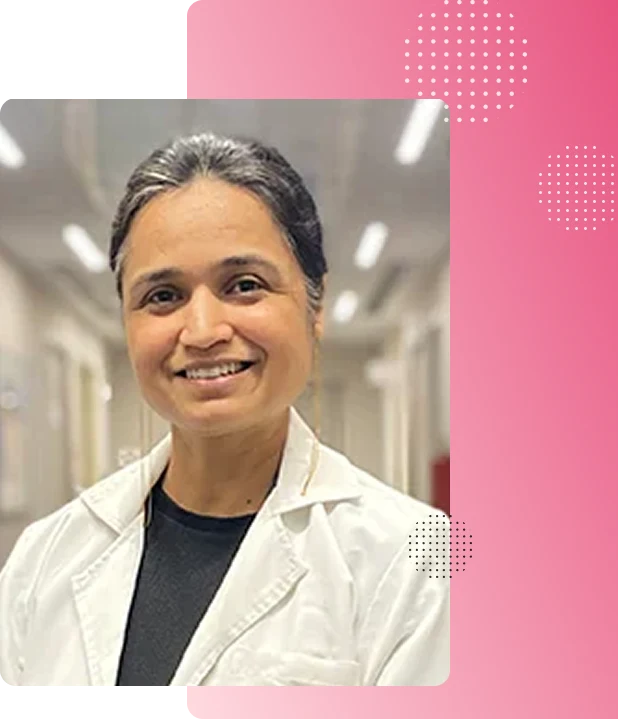Preparation
Pre-surgical evaluation (blood tests, imaging, ECG). Fasting for several hours before surgery.
Expert care under Dr. Aruna Kalra
Cervical cancer begins in the cells of the cervix, which is the lower section of the uterus that opens into the vagina. It usually starts with changes that aren't cancerous but can be detected and treated early. If cervical cancer is identified and treated early, most of the time it can be cured.
Dr. Aruna Kalra is one of the most sought after gynaecologist in Gurgaon who focuses on treating cancer and doing treatments that don't require a lot of cutting. She and her group of clinicians who work together to support women with cervical cancer. Her method is to discover problems early, make treatment programs that are unique to each patient, and give patients and their families care in all areas to give them the best chance of a happy outcome.
Early cervical cancer is often asymptomatic, which is why screening is so crucial. When symptoms appear, they may include:
If you experience any of these symptoms, prompt evaluation by Dr. Aruna Kalra or a cervical cancer specialist in Gurgaon is recommended. Early assessment leads to better outcomes and less aggressive treatment. It is also our best possible alternative to beat cancer.
Screening and accurate diagnosis guide the entire treatment plan.
Under Dr. Kalra’s care, these investigations are coordinated promptly and sensitively, with clear explanations at every step. Accurate staging (FIGO stages) helps determine whether the best course is surgery, radiation, chemotherapy, or a combination.

Treatment is individualised based on stage, tumour size, patient age, and fertility wishes.
Where minimally invasive approaches are appropriate, Dr. Kalra works with oncology surgeons who use laparoscopic or robotic techniques to reduce recovery time. Her patient-centred planning always balances cure rates with quality of life and fertility preservation where feasible.

The single most important cause of cervical cancer is persistent infection with high-risk Human Papillomavirus (HPV) - particularly types 16 and 18. Other factors increase risk or accelerate disease progression, including:
Dr. Aruna Kalra places strong emphasis on prevention, offering HPV vaccination counselling, screening programmes, and patient education so women can reduce their risk and catch abnormalities early when treatments are most effective
Recovery will be time taking as the body is under a lot of duress. Time taken for recovery from procedure will vary by treatment type. Surgery recovery often takes weeks; radiation and chemoradiation produce gradual side effects (fatigue, local irritation) that may persist for months.
Follow-up protocol usually involves:
Her team ensures continuity of care, moving patients from active treatment to survivorship with dignity and clear communication.
Cervical cancer includes surgery, radiation therapy, and chemotherapy, individually or in combination, chosen based on cancer stage, tumor size, and patient health.
fibroids, endometriosis, uterine prolapse, cancer, or heavy bleeding.
total, partial, or radical hysterectomy.
Robotic-Assisted, Laparotomy, or Laparoscopic Ovarian Cystectomy.
age, medical history, and overall health.
Pre-surgical evaluation (blood tests, imaging, ECG). Fasting for several hours before surgery.
May be done in the lower abdomen, through the vagina, or with small camera-guided incisions.
Incisions or vaginal openings are sutured. Sterile dressing is applied.
Hospital stay usually ranges from 1–3 days (may be shorter with minimally invasive surgery).
Gynae Cancer & Role of a Obgyn in Gynae Cancer
A Pap Test Screens for Cervical Cancer
Genetic Cancer: Be Aware, Get Tested
Here are some frequently asked questions
